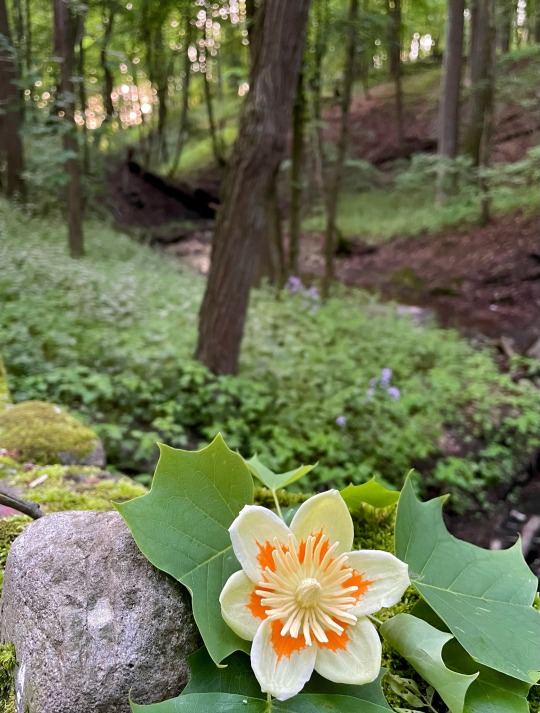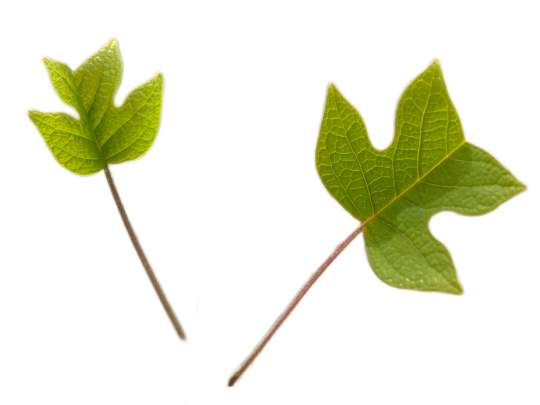#Tulip Tree
Explore tagged Tumblr posts
Text

I picked up that tulip poplar blossom from the forest floor and put it on the old bridge so you could see all of this at once.
1K notes
·
View notes
Text

Quarter tulip
#nature#photography#nature photography#naturecore#flowers#floral#spring#spring flowers#in bloom#spring blooms#tulip tree
113 notes
·
View notes
Text

#TULIP TREE started to bloom💚🧡💛
@samirafee
#source: samirafee#own picture#photographers on tumblr#nature#plants#my garden#liriodendron tulipifera#tulip tree#Tulpenbaum#june 2025
49 notes
·
View notes
Text

Tulip Tree
52 notes
·
View notes
Photo

Tulip Tree Crusta (#e8b535 to #fa853d)
66 notes
·
View notes
Text

Mockingbird & Tulip Poplar : : Watercolor & Gouache
#art#appalachian#appalachia#gouache#tattoo#american traditional#traditional tattoo design#mockingbird#tulip poplar#tulip tree
12 notes
·
View notes
Text

#tulip tree#Liriodendron tulipifera#iphone photography#photography#nature photography#wildlife photography#plant photography#tree photography#aesthetic pngs#transparent png#png#png blog#transparent#pngs
11 notes
·
View notes
Text

Plant Profile: Tulip Poplar - Liriodendron tulipifera
I return to bring news of the giant of the east, this plant profile will analyze one of our strongest early successional species with an eye-catching cat-like leaf, a fascinating connection to historic disturbance, and a showy floral display: the Tulip Poplar.

Tulip poplar is deceivingly named for the tulip-like appearance of its flower and the fast poplar-like growth of its wood; all this in mind it's actually a member of the Magnolia family. Other names for this tree are yellow polar and tulip tree. The genus Liriodendron was more widespread throughout the cretaceous period but today only has two living species in America and China respectively, L. tulipifera and chinense.


Let's start with description, mature Tulip Poplar is most easily identified by its tall, typically completely straight branchless trunk (image 2, 9) extending often a hundred feet before branching into magnificent candelabra-like forms. This is referred to as apical growth as more energy is placed into extending the stems/trunk. Tulip Poplar's bark is typically a light grey, finely furrowed almost-ash like, it's branches are reddish-brown, stout, and end in a solid bud (winter Image 6). Tulip Poplar's leaf is very distinct (image 4), symmetrical, each side with two major lobes (occasionally the lower lobe is split in two, visible in lower leaf image 4). Personally I liken it to a silhouette of a cat's face :). The leaves are variable in size and appearance, on younger saplings/low branches leaves are exaggerated and exceed 12" (Image 5) but the typical leaf is much smaller. As for flowers they bloom in mid spring (may in the north, march in the south), the flower itself (image 1) is yellow with orange bands, lower petals green. It's difficult to see the flowers up close but occasionally they'll fall low enough, they're loaded with nectar, they can be incredibly sweet. The flowers turn into a fruit cone-like aggregate of samaras that stick on end of branches until the following spring (see orange image 7) the individual seedlings (image 6) coat the forest floor in winter.



Habitat: Tulip poplar is the dominant early succession species in rich, well drained, moist woods, slopes, and coves of especially Appalachia. It will take over anywhere with enough moisture to sustain it, even out-competing invasives like tree-of-heaven....but only if it's ideal conditions are met, Typically north facing slopes provide the best conditions for a Tulip poplar but it's not restricted to these in anyway. Your best bet for finding large specimens is in these cove locations (image 2)
Range: Tulip poplar is in its highest concentration in the Piedmont and Appalachia of the American East. Limited with a northwestern range of Chicago, south to lower Louisiana, south east to northern Florida with a northern limit of the Hudson lowlands and an eastern limit in Connecticut. Due to its fast growth, it has become a popular specimen tree in Europe.

Ecology and lifespan: As mentioned Tulip poplar are early successional species, but they're probably the Appalachian regions most important species in forest regeneration (saplings in field image above). Young trees can reach 7 feet in height in just 3 years and they are prolific with enough light. Their lifestyle is atypical of most pioneer species in the sense that they do not dissapear in second-growth stages of mature forests, they can live for upwards of 500 years, they grow taller than most forest species (often just under 200'), and their wood isn't as weak as other fast-growers.

The tall trunk above is likely 100 years old, due to the intense logging pressure in the east it's not uncommon for 'mature' forests to be mostly composed of Tulip poplars (The Wissahickon in Philadelphia, great example). The fallen leaves are quick to degrade but produce an allelopathic effect on some herbacious growth. Ecologically speaking Tulip poplars are not a great food source for invertebrate species aside from pollinators, only host to less than 30 moth species and sometimes the eastern tiger swallowtail. The prolific seeds are decent forage for birds however.
Uses: Tulip poplars are sometimes used nowadays in southern tree plantations as fast growing hardwood, their vertical growth habit is desirable for boards and the wood is favored as a detailing piece often compared to white pine. Ethnobotanical uses from my time with the Lenape I only heard of Tulip poplar being used as a dugout canoe, these trees can reach massive proportions historically imagery shows some stunning accounts (check out Kilmer memorial forest in NC for some 400 yr old massive ones). Today, tulip trees are enjoyed among bee keepers for the distinct honey quality.

Landscaping: Tulip Poplars recently have a new place as an Allee tree many contemporary designs. An older unconventional use is in Swathmore arboretum in Pennsylvania (Image above) which uses Tulip Trees as a neat vertical feature in an amphitheater. Due to its fast growth they serve as excellent shade trees and the Orange-yellow fall coloring creates an excellent seasonal display. Tulip tree generally has weaker twig falls however the issue of weak branches isn't that big of a concern.
Propagation: Tulip trees are best propagated from seed planted in a nursery bed in fall, allowed to grow for one year then moved elsewhere before leaf out the next spring. The tree is tolerant of disturbance otherwise but you must be very delicate. They prefer loamy soils and cooler locations in sun.
Future Outlook and Longevity: So with Climate Change and Anthropogenic pollution how will Tulip trees fair? An ESA article study by David LeBlanc analyzed the growth habit of tulip poplars and found that the strongest associated period of growth was consistent water supply during May and June. Meaning spring droughts (which we've been getting more of) have negatively affected Tulip tree growth, however growth is not as effected in extremes of other seasons. As for pollution Tulip Poplars are tolerant of heavy metals, I've seen these trees survive in serpentine barrens as well as in the Lehigh gap Superfund Site in PA (Image Below)... that site is so toxic for one to survive literal zinc poisoning, desiccation and acid rain of that level I'm never gonna be worried about these tree completely disappearing There is hope for our natives yet.
I hope you all enjoyed this quick plant profile, with spring coming up try to keep your eyes in the air to spot the Tulip Tree's quirky floral bloom. Happy hunting!

#Plant profiles#tulip poplar#tulip tree#native trees of the eastern united states#Liriodendron tulipifera#pennsylvania#New Jersey#trees of appalachia
13 notes
·
View notes
Text



03/13/25 more flowers because i love spring🌸🌸🌸 i wanna become a plant girlie who has lots of potted plants
#my pic#mine#spring#flowers#tulip bloom#tulip bud#cute#nature#tulip tree#flower#bloom#love#mypic#morning
11 notes
·
View notes
Text

Charles E. Burchfield (1893-1967, American) ~ June Night (Luna Moth, Tulip Tree in Bloom by Moonlight), 1959
[Source: burchfieldpenney.org]
88 notes
·
View notes
Text

tulip poplar flower.
#nature#trees#flowers#tulip poplar#tulip tree#liriodendron tulipifera#my photos#these are among my favorite flowers they are just...so so pretty#the trees themselves can be over 100 ft tall and are just so damn majestic#one of my favorite trees is by itself in the middle of a field at a local botanical garden and it is MASSIVE — a true queen
45 notes
·
View notes
Text


💛
6 notes
·
View notes
Text

Grab your sleeping bug
#nature#photography#nature photography#naturecore#flowers#floral#spring#spring flowers#tulip tree#tulips#ladybug#ladybugs#insects#buggies#insectcore
61 notes
·
View notes
Text

#TOMMY🐈ME on the TULIP TREE🌳
@samirafee
#source: samirafee#own picture#photographers on tumblr#my cat#tommy#tree climbing#tulip tree#my garden#march 2025
30 notes
·
View notes
Photo

Deep Bronze Tulip Tree (#573e04 to #f0a447)
15 notes
·
View notes
Text


I remembered while we were out walking that I had noticed a tulip tree in our neighborhood sometime last year, so we went looking to see if it was flowering. It was a bit too dark for very good pictures.
5 notes
·
View notes